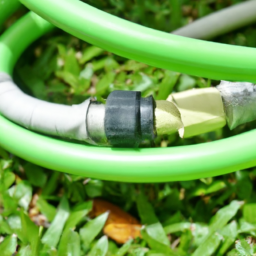How to Increase Garden Hose Pressure
How To Increase Garden Hose Pressure
How to Increase Garden Hose Pressure
The ability to increase garden hose pressure can potentially boost the efficacy of garden watering, enabling faster and more comprehensive coverage for a variety of gardening tasks. Whether you require additional water pressure to help clean siding, unclog a gutter, or feed a system of sprinklers, understanding some of the most helpful ways to upgrade your garden hose's pressure can make sure you have the power to get the job done right.
Know Your Limits
To get started, you should understand that while certain hose-mounted accessories are effective in increasing water pressure to some level, your overall expectations should remain within the limits of traditional garden hose pressure. If you are hoping to reach the type of water pressure needed for professional-level jobs, you will likely need to invest in an upgraded system capable of producing this level of force.
Attach a Pressure Booster
For gardeners seeking a moderate increase to their hose pressure, investing in a pressure booster can help. Such an addition to your existing hose setup involves attaching the booster directly to the water faucet and connecting the hose to the appropriate connector outlet. This booster helps minimize any water pressure loss through the hose and some models can provide a 30-40% boost in overall pressure while also saving water through its efficient design.
Test for Leaks
Before attempting to increase the pressure of your garden hose, you should take the time to check your hose for any leaking connectors. If this is the case, you should consider replacing or tightening the current connections, as any leaks can significantly detract from the overall pressure level.
Select the Appropriate Hose
The quality of the garden hose you select will also potentially affect the amount of water pressure you get. Heavy-duty hoses with thick walls tend to allow higher amounts of pressure per square inch due to their design, and some can even offer a boosting effect of up to 50%.
Add a Pressure Regulator
For those unable to find a satisfactory increase in garden hose pressure with a reinforced hose alone, investing in a pressure regulator and installing it near the end of the hose can help increase the overall pressures even further. Pressure regulators are designed to prevent hose bursts and damage to irrigation systems, so adding one is a safe and effective option.
Keep It Clean
The hose nozzle and any attached accessories should be kept clean and free of debris, as any buildup or dirt can negatively affect water pressure. Dirt can also lead to faster corrosion and wear.
Upgrade the Water Main
Finally, for more extreme pressure issues, you should consider upgrading your water main rather than solely relying on garden hose solutions. This could involve consulting a professional contractor to inspect your water main for any potential problems and determine the best and most cost-effective method of upgrading your main system to optimize your water pressure.
Brief Recap
Increasing the pressure of garden hoses can help with various gardening tasks, whether in terms of better water coverage or more powerful cleaning and irrigation operations. Apart from making sure any existing hose connectors are tight and leak-free, gardeners can explore options like pressure boosters, reinforced hoses, pressure regulators, and water main upgrades. It's important to keep all hose accessories clean and free of debris. With some knowledge and effort, gardeners may be able to find the pressure that best fits their watering needs.
The ability to increase garden hose pressure can potentially make gardening and other outdoor tasks easier and more efficient, so there is a range of methods and equipment gardeners can use to upgrade their current hose setups. With the right knowledge and tools, gardeners can find the best potential hose pressure for their specific needs.

Previous Page
